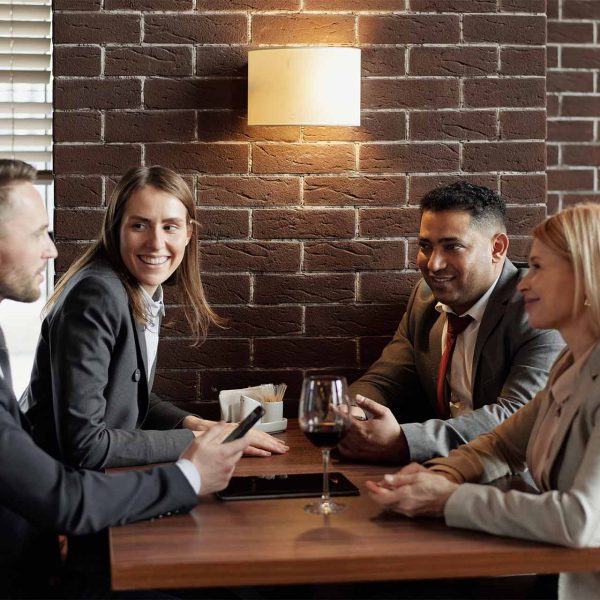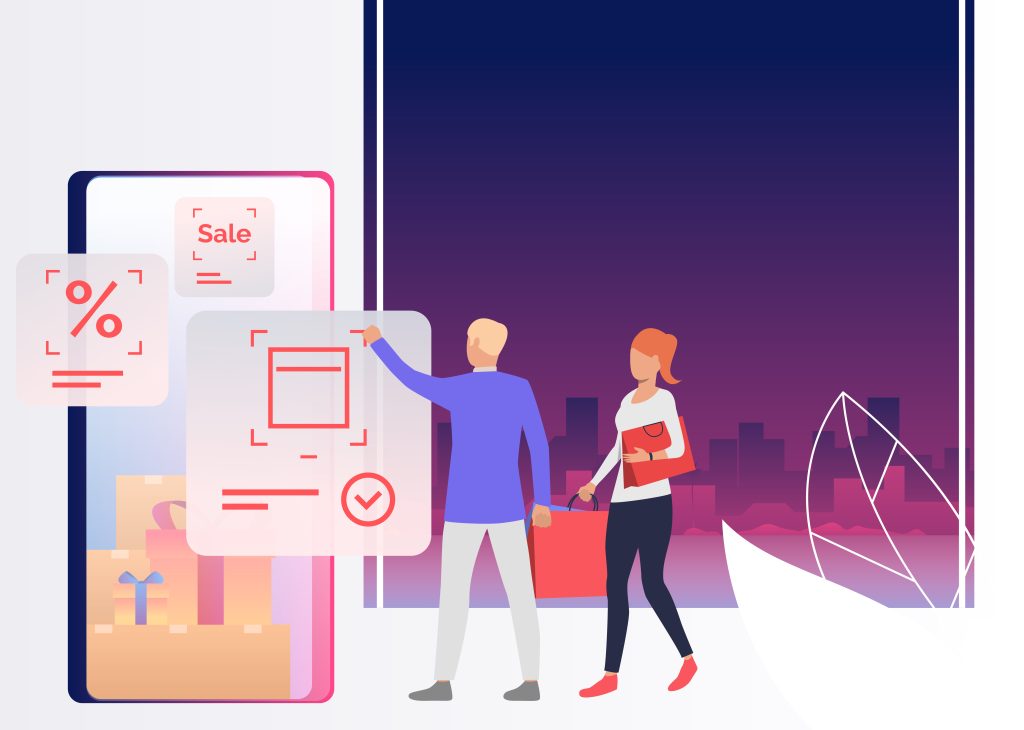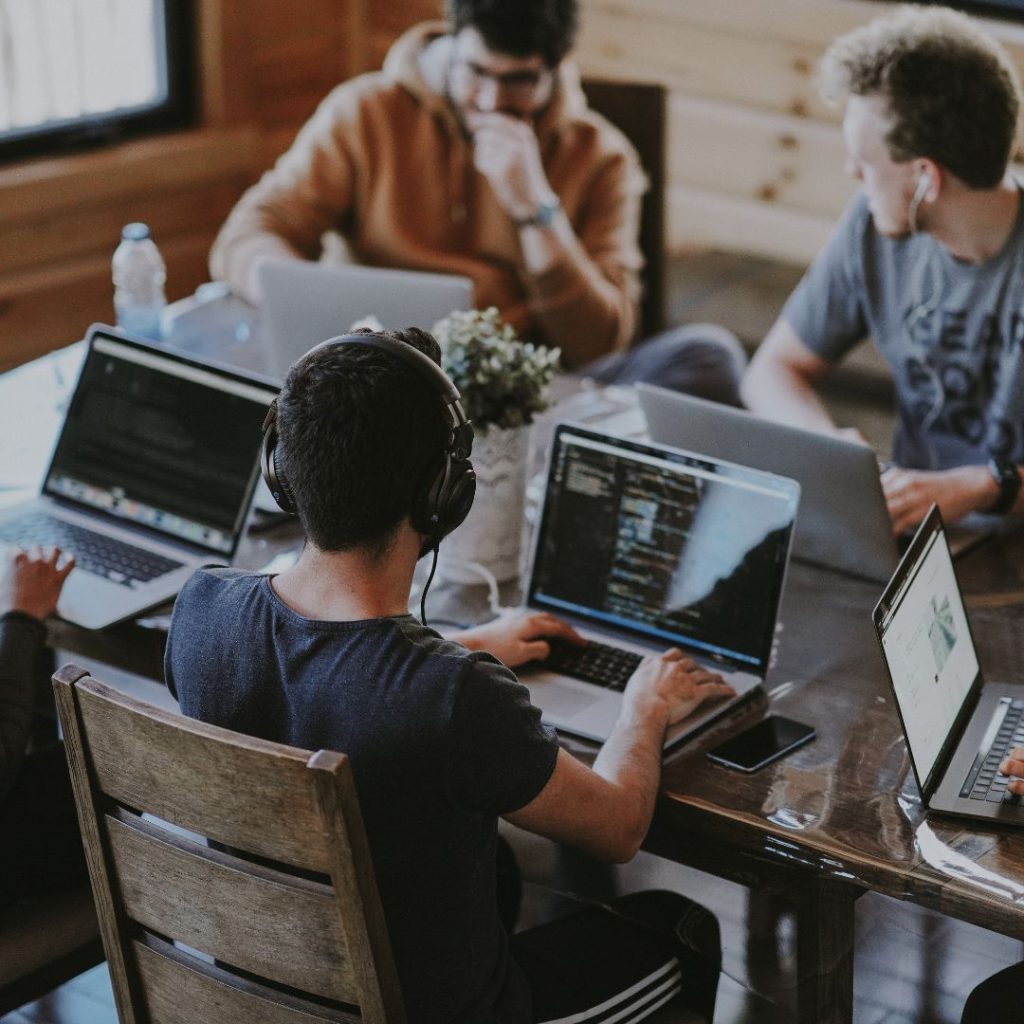71% of consumers say they would shop more often if they used AR
AR has the unique ability to communicate details about products that traditional photos can’t match. This has allowed customers to make confident buying decisions and led to increased satisfaction and stronger brand loyalty. We deliver key AR/VR services.
What is Augmented Reality (AR)?
AR is the use of a mobile device or headset to enhance the physical world around us through the use of digital visual elements, sound or other sensory stimuli. AR users can view these elements through their screens, take photo or video captures, or interact with them in other ways. One of the primary goals of AR technology is to highlight specific features of the physical world, increase the understanding of those features and use the resulting analysis and insight to apply to real world situations. It differs from Virtual Reality in that AR adds to the existing world as it is, whereas VR creates its own cyber environment.
“I feel that Augmented reality is perhaps the ultimate computer.” — Satya Nadella
Our clients have seen a 10% steady growth in organic traffic
Considering that there are currently more than 171 million users worldwide, the VR industry is showing great potential.
What Is Virtual Reality (VR)?
As the name suggests Virtual Reality is a digitally created three-dimensional environment that has been generated using advanced computer technology. It allows users to be immersed in a simulation of a different world. This is achieved by simulating as many senses as possible through the use of special devices such as headsets, goggles, gloves fitted with sensors, all directions treadmills and more which allow the user to explore and interact with the various elements of the virtual world and have a realistic-feeling experience. The technology used in virtual reality creates an environment that is as near-reality as possible, which presents the senses with artificial information that makes the users mind believe it and interact with it.
VR is estimated to generate $1.8 billion in the retail and marketing segments in 2022
Types of AR experiences
Face Filters
Using face filters on instagram has become second nature, that one almost forgets that it is a function of AR. Face filters impose an augmented reality effect on the users face, which changes their appearance immediately. It’s easy to use, easy to share and creates a unique bond between the brand and the customer. Who doesn’t like sharing a beautifully augmented selfie to their friends. Brands like L’Oréal and Hellblade have used filters and lenses to promote innovative marketing campaigns.
World Effects
These effects can be created using a back-facing camera.when focussing on a blank plane, world effects create a 3D image in the space front of the user, allowing it to become part of their visual environment.World effects combine the real and digital world to create an immersive and realistic experience that allows the customer to really connect with the brand. The possibilities of using World effects are endless, from simulating products to creating brand awareness fun campaigns.
Portals
Portals are an entertaining way to immerse the user in a fantastical world of their own creation. When the user steps through a virtual doorway, which the camera imposes on a horizontal plane, the user is transported into a new realm. The brand can create photorealistic simulations of foreign places or animated winderlands for the consumer to dive into. Portals offer unparalleled depth and immersion in their virtual worlds, making the brand unforgettable.
Mini-Games
Mini-games are the most interactive type of AR experience that allow users to take part in short games by using face gestures or tapping on their screens.They are a quick and easy way to keep the consumer engaged. While users actively interact with mini-games the products branding is also being advertised. They have a high degree of shareability and the brands recognition goes up through competition and communication between users.They are a great way to increase engagement.
Image trackers
Image trackers are the perfect way to add depth to any marketing campaign, they augment a physical object or image with added layers of content and information. Materials such as posters and merchandise can be elevated to the next level with Image trackers. While some trackers require the target to be in the frame at all times, others can use an image to trigger an AR experience which can then operate independently of the source.Image trackers work remarkably well in combination with other types of advertising like posters, billboards or logos and can boost your campaign to the next level.
Web AR
Web-based augmented reality is a powerful way for brands to bridge the gap between the end user and an AR experience. It is an AR experience held within a web page. All that the consumer needs to do is view the webpage URL through a smartphone camera. It does not require an app and is particularly effective for brands that require a low barrier of entry, a website integration or a physical activation.











Use Cases of Virtual Reality (VR)
Military
The military in different countries adopts the use of VR in their training as it allows them a huge range of possible scenario simulations. VR simulations are being used by the army, navy, air force, marines and coast guard. VR is effective to transport a trainee to different situations, places and environments for a range of training purposes. The military can use it to simulate situations involving flight, battlefield and medic training among others. Soldiers can be trained for dangerous situations without putting them at risk until they are ready for combat. It is also used to treat PTSD in soldiers.
Sport
The sports industry is also being revolutionized by VR. It can be used by coaches and players of different sports to train more efficiently. They are able to try out different simulations to improve their performance. VR is used as a training aid to measure athletic performance and analyse technique. It is also said to improve the cognitive abilities of players while they experience gameplay scenarios. On the other hand, VR has also been used to enhance the viewer’s experience of a sporting event. The potential of VR in sports is enormous as one day we might be attending sporting events from all over the world virtually.
Mental Health
Along with behaviour therapy, VR has become a very important method of treating mental health disorders like post-traumatic stress. Through re-enactments of the traumatic experience, the person can take time to process the event, come to terms with it and heal. In the same way, it is being used to treat anxiety, phobias and depression. VR has effectively been used to manage stress and anxiety through meditation while boosting coping mechanisms. Patients with phobias are able to come into contact with things that they fear whilst remaining in a controlled and safe environment.
Medical Training
Medical and dental students have been reaping the benefits of the interactive nature of VR in their training. It enables them to practice procedures and surgeries without taking the risk of real patients. This way the risk of inflicting harm or making mistakes is minimised. Students are allowed to develop skills on virtual patients which can later be used in real-world applications. VR is an effective way to optimize costs in the medical industry as well as improve the quality of the students training.
Education
VR has also been used in schools for teaching and learning situations. Students can be taken on virtual field trips to museums as well as can be engaged in history, geography and science through educational simulations. VR can be of particular benefit to special needs students such as those with autism. It can help them safely practise social skills in a controlled environment.
Fashion
The fashion industry has also been impacted by VR technology. It is used by retailers to design their store environments and displays without fully committing to permanent structures like they would have to do in the real world. It helps with doing a walkthrough of the store’s layout. Brands like Tommy Hilfiger, Coach and Gap have already started using the technology in their business. The fashion industry can also use VR to develop 360-degree experiences of fashion shows and allow customers to try on clothes virtually.

Let's Talk!
For any queries about Kilowott’s services/solutions, please complete the form below and we will get back to you soon.






